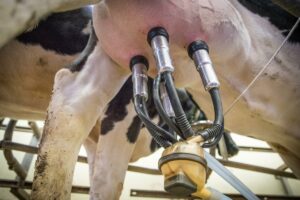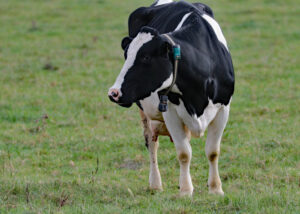Fernando Diaz
Gastrointestinal nematodes like Cooperia oncophora and Ostertagia ostertagi are widely prevalent in dairy cattle. Nematodes cause production losses through reduction in intake, growth, milk production, and mortality in heavily parasitized animals. Young animals are more often affected by nematode infections because they have not been previously exposed to parasites. Control in replacement heifers relies on farm management practices related with housing, feeding, anthelmintic treatment, and grazing management.
In order to estimate the prevalence and fecal egg counts of gastrointestinal nematodes in dairy heifers, Canadian researchers (Scott et al., 2019) collected fecal samples in 2369 breeding-age heifers from 306 dairies located across Canada.
Fecal egg counts were performed on each individual sample using the modified Wisconsin double-centrifugation sugar flotation technique, and predominant nematode species at the farm level (pooled sample) were identified by deep-amplicon nemabiome sequencing of the rDNA (ITS-2) locus of nematode third stage larvae (L3). These were the main findings:
- Gastrointestinal nematode infection was detected in about one-fifth (20.9%) of Canadian dairy replacement heifers. Interestingly, access to pasture was a significant risk factor for nematode infection. The prevalence was higher in heifers that had access to pasture (65.6%) compared with those that did not (8.4%).
- Fecal egg counts were low. Overall, the authors reported 1.7 eggs per gram of feces (ranged from 0 to 141).
- Of the 306 farms, third stage larvae were successfully harvested from only 58 farms (18.9%). The predominant species that accounted for over 50% of the L3 larvae in over 90% of the samples were Ostertagia ostertagi and Cooperia oncophora.
In conclusion, compared with previous studies conducted in other countries, the prevalence and fecal egg count intensity reported in this work were very low in these farms. It is possible that the climatic conditions in Canada (long cold winters and dry hot summers) may reduce the risk of gastrointestinal nematode infection in dairy heifers. Deworming heifers with anthelmintics is an effective preventive practice mainly if they have access to pasture.
Reference
Scott, J. S. Gilleard, M. Jelinski, H. W. Barkema, E. M. Redman, R. W. Avramenko, C. Luby, D. F. Kelton, C. A. Bauman, G. Keefe, J. Dubuc, and F. D. Uehlinger. 2019. Prevalence, fecal egg counts, and species identification of gastrointestinal nematodes in replacement dairy heifers in Canada. J. Dairy Sci. 102:8251–8263.
© 2019 Dairy Knowledge Center, LLC. All Rights Reserved.











